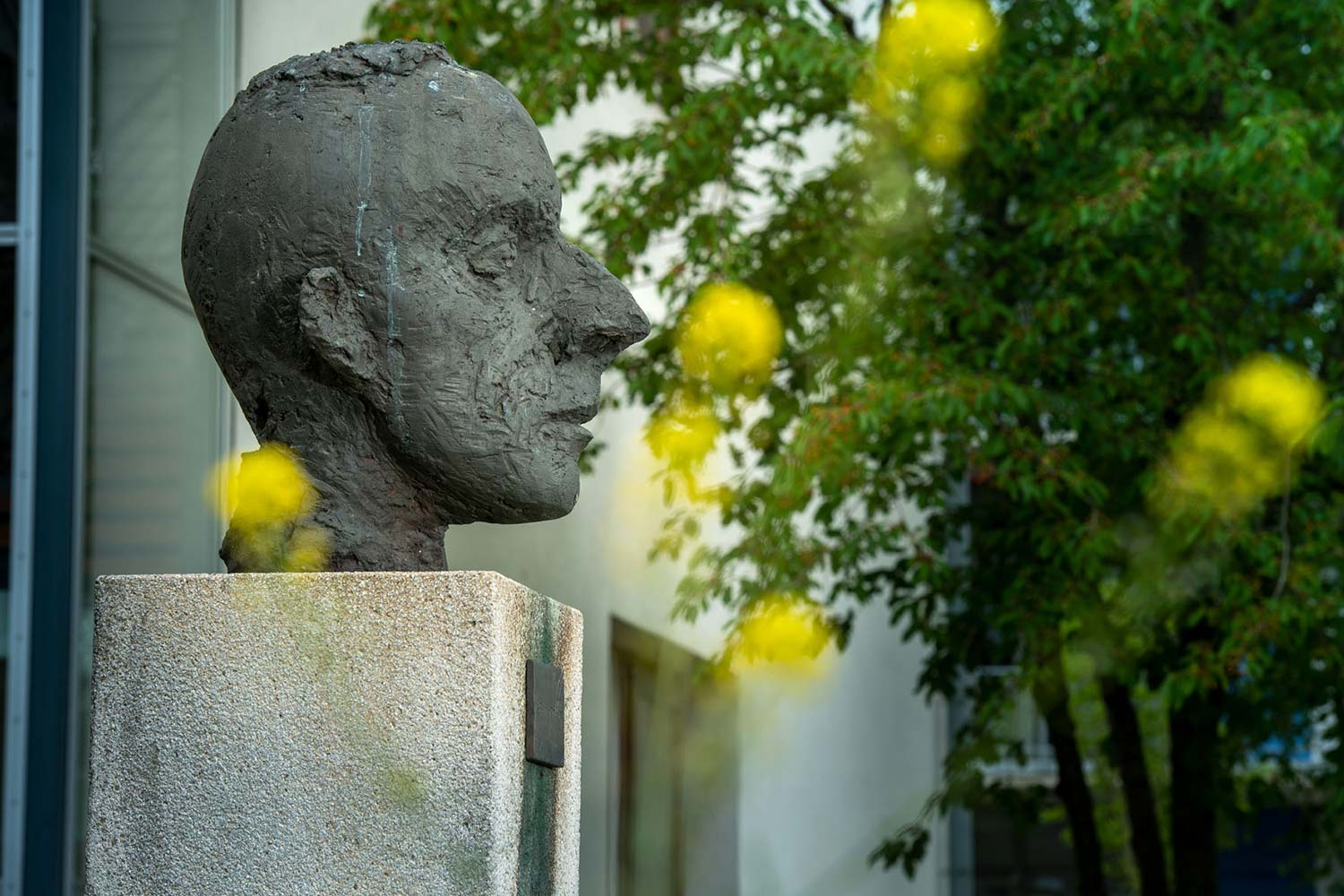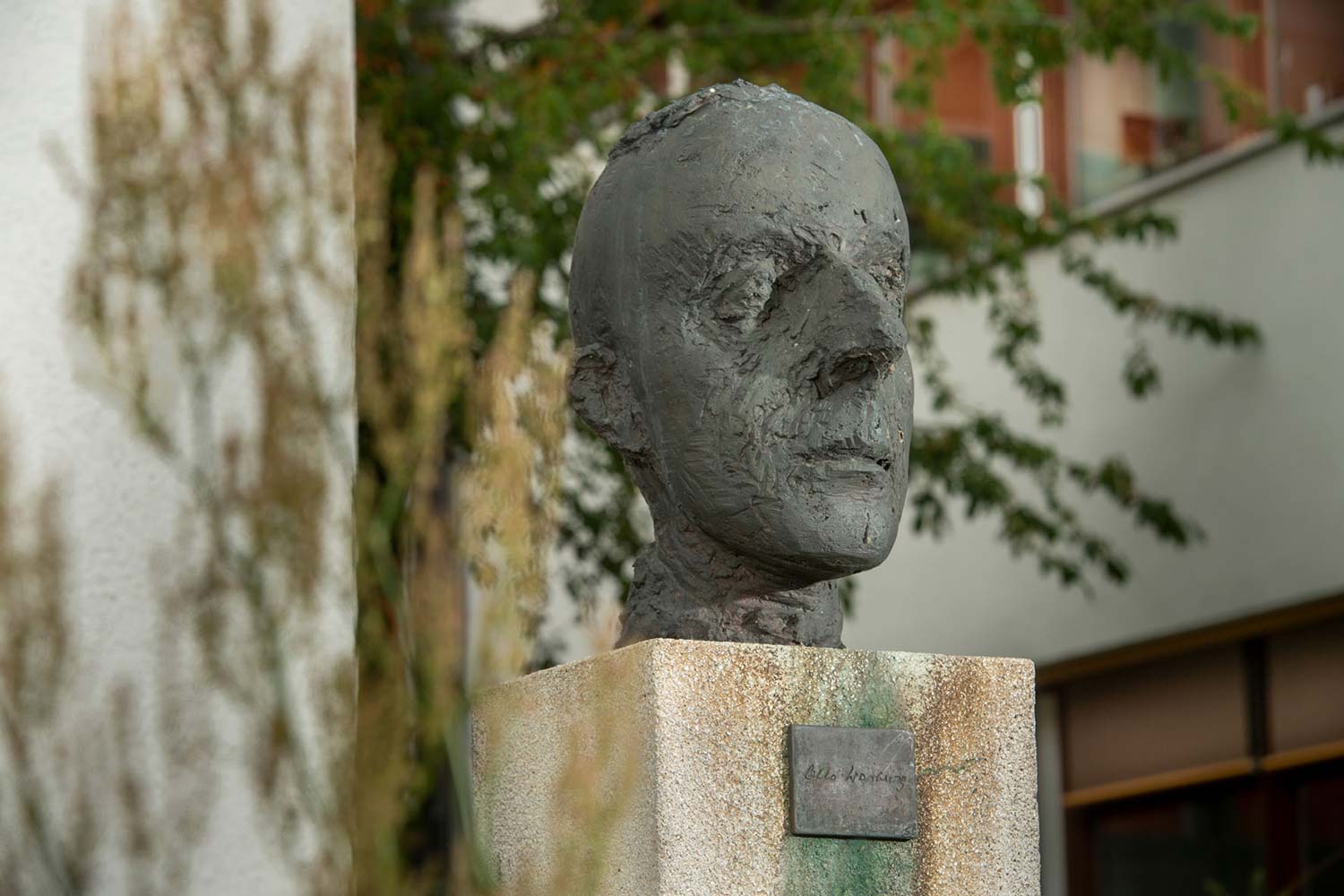4Otto Warburg
October 8, 1883 in Freiburg –
August 1, 1970 in Berlin

Otto Warburg was a German biochemist and physician. His scientific work dealt with questions of cellmetabolism, photosynthesis and carcinogenesis. Warburg counts among the most important biochemists of the first half of the 20th century. In 1931 he received the Nobel Prize in Physiology or Medicine for ”the discovery of the nature and function of the respiratory enzyme“.
Otto Warburg began studies of chemistry in Freiburg in 1901. In 1903 he switched to Berlin, where he continued his studies until graduation in 1905. From 1905 to 1911 he studied medicine in Berlin, Munich and Heidelberg. In 1906 Warburg received his PhD in Berlin. He was awarded his Dr. med. in 1911 in Heidelberg, and he habilitated in physiology just one year later. In 1914 the Friedrich-Wilhelms-University Berlin gave him a teaching position in physical chemistry and biology; starting that year he also headed the Department of Physiology at the Kaiser Wilhelm Institute for Biology in Berlin-Dahlem, a position he held until 1930. From 1921 to 1923 he also held an extraordinary Professorship in Physiology at the medical faculty of Berlin University. In 1931 Warburg became the founding director of the Kaiser-Wilhelm-Institute for Cell Physiology in Berlin-Dahlem, which became the Max-Planck-Institute for Cell Physiology in 1952.
Because Otto Warburg was of Jewish descent, starting in 1939 the Reich Ministry for Science, Education and Popular Education put pressure on him to step down as head of the KWI. The general secretary of the Kaiser Wilhelm Society, Ernst Telschow, also ordered Warburg to resign from office in 1941, but Warburg never tendered his resignation. Somehow he managed to remain in the position until the end of the war, and headed the Institute for Cell Physiology until his death in 1970.

In 1947 Warburg was appointed to the founding board of trustees of the Institute for Medicine and Biology of the German Academy of Sciences in Berlin-Buch.
Warburg worked on enzymes of cell respiration. He received the Nobel Prize for his discovery and description of the respiratory enzyme cytochrome oxidase, later called ”Warburg‘s respiratory ferment“, as well as coenzymes such as pyridine nucleotides involved in the mitochondrial respiratory chain. This work led Warburg to the theme of the metabolism of tumors. Warburg discovered that tumors have an increased concentration of lactate, a substance formed during anaerobic glycolysis. However, Warburg found that the tissue contained enough oxygen for the mitochondria to aerobically metabolize sugar, which led to his formulation of the ”Warburg hypothesis“. This proposed that the main reason for the development of cancer cells is a disruption in the function of mitochondria, an assumption that is now considered obsolete. Finally, Warburg made important contributions to explaining photosynthesis in plant cells.
He also developed new experimental methods for research. To quantitatively measure gas conversions during metabolic processes, he developed a new manometric device called the Warburg apparatus. To measure chemical processes, he used the optical bench, an early type of spectrophotometer. Both devices are on display in the Campus Museum.
Otto Warburg died in Berlin in 1970. His findings continue to have an influence on today’s medicine. In particular, Warburg‘s discovery that many tumors exhibit an increase in sugar metabolism led to the development of diagnostic imaging methods such as positron emission tomography.
More information on the optical bench and the Warburg apparatus can be found in the Campus Museum.
Sabina Grzimek, Bronze, 2001